Whether you are having a big party (in any other year) or a small intimate evening in, nothing can beat a well presented Charcuterie Board. The key is that it has to be well presented. Otherwise, it’s just some meat and cheese on a plate. Today, I’ll share some tips and tricks with you so that you can make your next Charcuterie Board look just like the pros. Let’s get to it.
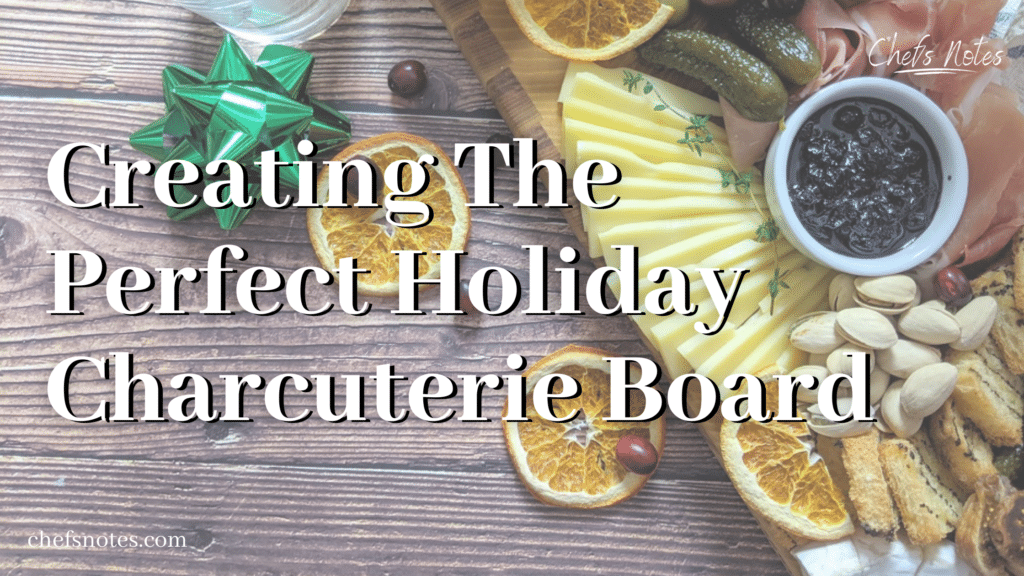
Getting Started
First things first, let’s talk about ingredients. There is no point in putting in the effort to make a beautiful charcuterie board using low-end ingredients. Now, to be clear, I’m not saying you need to spend loads of money here. But, we’re not making a supermarket deli tray either. Splurge and get a few nice cheeses and a few nice types of meat. That’s all you really need. Let’s look at some specifics.
Choosing The Right Cheese
There are three things that I think about when I choose the cheese for any charcuterie board. First and foremost, it has to taste good. If it doesn’t, why would you use it? Next, I think about shape and texture. If all of the cheese on the board is the same shape and texture, it will look boring, and it will be boring to eat. Yes, you can control the shape to some degree with how you cut and present the cheese, but there is only so much you can do. Finally, I think about variety and the style, and the taste of the cheese. Usually, I try to have one soft cheese like brie or camembert. I like blue cheese, so I pretty much always include one such as gorgonzola or stilton. And, I usually use a semi-firm to firm cheese. This can be anything from a really nice aged cheddar to asiago, to manchego, or Beemster.
If you want to really get into it, you can use cheese that comes from the same places as your meats. So, if you are using Italian meats, or Spanish meats, you would use Italian cheese, or Spanish cheese. I don’t generally worry about this too much unless the board itself is themed to a specific place. Using French cheese with Italian meat isn’t going to ruin your board or your experience.
One other tip when it come to the cheese is to avoid novelty cheese like beer-veined ones, or holiday shaped ones. For the most part, they aren’t going to taste good. They aren’t going to pair well with the other things on your board. And they are going to make your charcuterie board look kind of hokey.
Charcuterie Meats
When it comes to the meat on a Charcuterie Board, I actually really like the three packs of Italian meats you can get at most grocery stores. Please don’t buy the cheapest one. It will likely taste cheap. Having said that, you don’t have to buy the most expensive one either. These packs work best when making a board for two to six people, but any more than that, and you are going to want to go to the deli counter and get them to cut the meats fresh for you. This will save you a considerable amount of money.
If you have a specialty charcuterie store in your city, go there. It is going to be exponentially better than what you get at the grocery store. They will likely have some delicious paté, terrines and lots of other items that you can use on your Charcuterie Board as well. Speaking of paté, I don’t typically recommend grocery store paté, but if you like them, go for them.
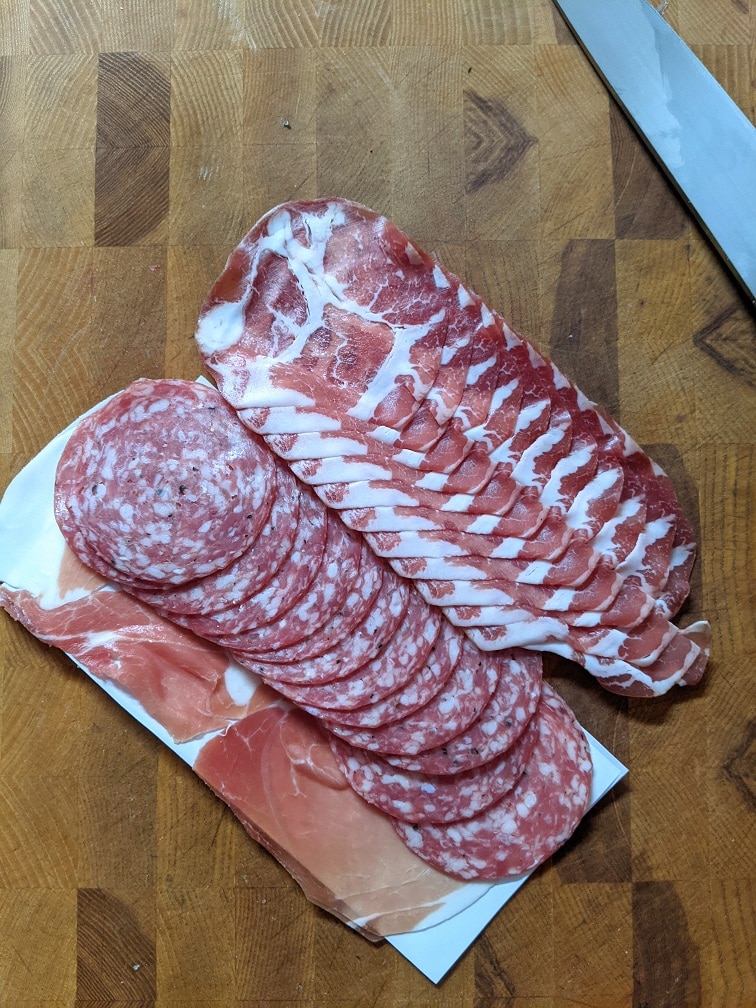
Sauce
It’s always nice to serve at least one kind of sauce with your Charcuterie Board. This could be as simple as nice mustard to pair with the meat or a high-end jam to go with the cheese. I really like a savoury blueberry compote paired with cheese, especially brie and blue cheese. If you’d like to make my blueberry compote, you can find the recipe at the end of this post.
Bread
Every Charcuterie Board needs some type of bread item. This could be as simple as some torn up baguette or store-bought crackers. But, I find that toasting some bread (this is gluten-free sourdough from Promise Gluten-Free) with olive oil and aged balsamic or balsamic reduction not only tastes great but looks great too. It really adds that extra wow factor to the board. To make these, cut some bread into 5 cm x 5 cm squares, put them on a lined sheet pan, drizzle with olive oil and thick balsamic vinegar (reduction or aged), then bake on 400°f for ten to twelve minutes.
Assembling Your Charcuterie Board
Now that we have the main components of our Charcuterie Board mapped out, let’s look at how to put it all togehter.
The Board
Obviously, you are going to need a plate or board to put your ingredients on. For two to six people, I use a twelve to sixteen-inch board. For two people, this would be a meal, not an appetizer. The board can be a cutting board, a sanded and oiled piece of maple, or even a long narrow plate. You can plate your charcuterie on a round plate, but that’s not what we are doing today. The board I’m using is from Ashwurks Cutting Boards.
The Cheese
I always start with the cheese becasue it helps shape the rest of the board and becasue the cheese is best served at room temperature. So, as I’m putting the rest of the board together, the cheese is coming up to the perfect eating temperature. I always put cheese on opposite corners when using a square or rectangular board, then one cheese in the middle. This helps to break the board up and gives me lots of room for everything else.
Brie and other wheels of cheese can be served as either a whole wheel or a half wheel. Obviously, you can buy bigger pieces of brie, in which case, you would not use a full or even half wheel. But, when buying small wheels, I will put a half wheel in a corner or put a full wheel right to the center of the board. I also like to pre-cut brie and other soft cheese becasue it is easier to cut when it’s cold, which prevents a large mess later on.
Blue cheese I don’t cut becasue it is typically pretty crumbly. I put a wedge of it in one corner and make sure to serve a cheese knife with it. Whatever it may be, the third cheese is what I use to break up the board visually. I avoid cutting the cheese into cubes like the plague. There is nothing that is going to make your board look cheaper than cubed cheese. Suppose the cheese comes in a wedge, cut across it to get thin triangles. If the cheese is rectangular, slice it, cut the slices into triangles if you can, or use the thin rectangles. Fan the third cheese out. This looks great and makes the cheese easy to grab.
How much meat and cheese to serve?
If the charcuterie board is served before a meal, aim to have about 56 grams or 2 ounces of cheese per person and the same amount of meat. If the board is the meal, aim for about 150 g or just over 5 ounces per person. That is cheese in total, not of each kind of cheese and the same with the meat.
Cups and bowls
After the cheese, I like to add any cups or ramekins that I may be using. On my example board, I use one small cup of blueberry compote. But you may have cups of mustard, pickles, olives, anything like that. Essentially, anything rigid should be added to the board, right after the cheese.
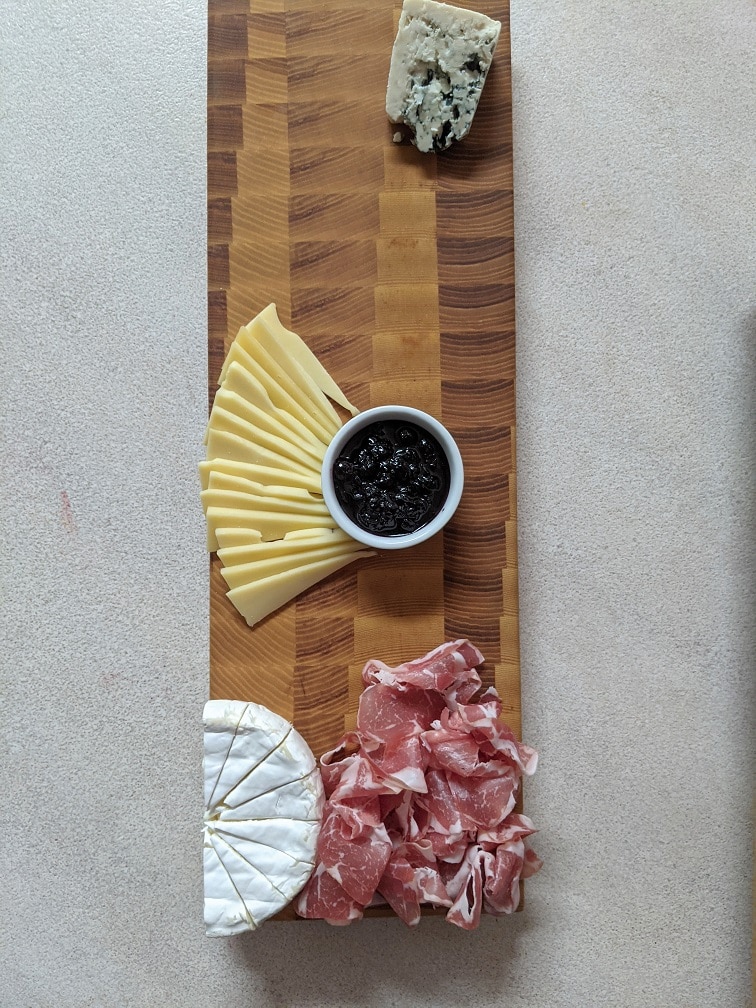
Your Charcuterie Meats
Next up, the meat gets added. Just as with cheese, you want to create different textures with the meats. Again, this isn’t a meat and cheese tray from your local grocery store’s deli section. Avoid rolling meats into tubes and stuff like that. How you present the meat really depends on what meat you have. With my example board, I have coppa, salami, and prosciutto. The coppa and salami are both round, and the prosciutto is prosciutto shaped. Generally, I fold salami into quarters. It holds well and looks nice enough. With the coppa, I pinch it gently in the middle and form it into a loose bunch.
There is a common mistake when it comes to preparing slices of prosciutto for a charcuterie board. People tend to roll it or fold it up, but it makes eating very unpleasant. Eating rolled prosciutto feels very similar to eating raw meat, which is not usually very much fun. Instead of rolling, gently fold the prosciutto into ribbons. When your guests eat it, they should be eating only one-two to layers at a time. This makes the prosciutto much more enjoyable to eat.
Position of the meats
As for where to place the meats on your board, I like to bunch them up with the cheese. You don’t have to do this, but I find it helps keep everything looking nice and tidy, and saves room for bread or crackers, and other garnishes.
Bread and Crackers
The next elements to be added to the board are the crackers or bread. I like to use these items as borders or dividers between the different sections of my board. There are salami and blue cheese at the top, then a bread border. At the bottom, coppa and brie, and a bread border. Again, this helps with the visual appeal, but it also puts the bread or crackers exactly where you want them next to the spreadable cheese.
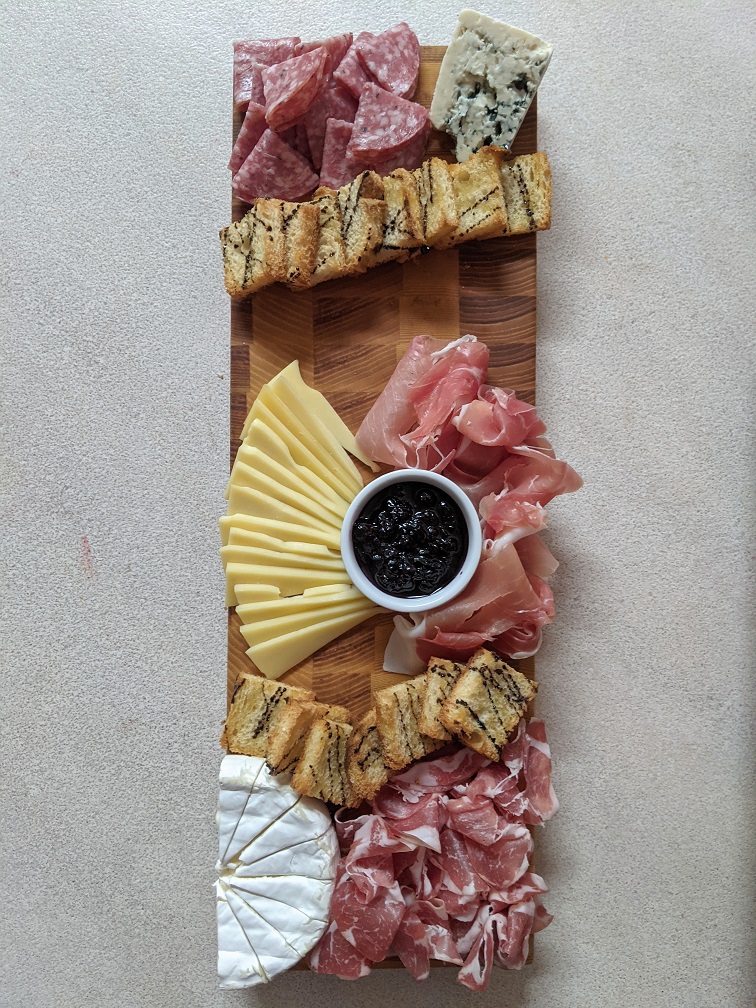
Garnishing Your Charcuterie Board
The final step, and visually the most important, is to garnish your charcuterie board. For the best visual appeal and variety in eating, use a few different garnishes. I have grapes, cranberries, dried figs, pistachios, gherkins, olives, dried orange slices, and a few sprigs of fresh thyme on my board. So that you know, most of these items I had on hand already. Don’t spend more on garnish than your main items. Buy one or two things, then use whatever you have around the kitchen.
You don’t have to use the exact garnishes that I did, but the idea is to fill the blank space with pops of colour and different textures. Of course, you want most, if not all, of your garnish to be things that you actually want to eat. Also, don’t go overboard here. There is such a thing as too much garnish. A few pieces of each item is more than enough.
The Finished Charcuterie Board
Your finished charcuterie board should be visually stunning and easy and enjoyable to eat. This is food, after all. Ideally, your guests or partner will literally say, “Wow!” when they see it. If someone says, “I don’t want to eat it because it is too beautiful.” you know you’ve done your job.
Conclusion
There isn’t much difference between a professionally prepared Charcuterie Board and an amateur one. It’s mostly the same meats and the same cheese. Like with most things, it is the little extras that separate the two. Pay attention to the placement of things. Think about colour and texture. And use garnish to fill up the board and add pops of colour. Just like that, your amateur looking Charcuterie Board has become a masterpiece that any pro would be happy to serve.
You can find the Blueberry compote recipe below.
Thank you for reading the post. If you liked it, remember to share it on Facebook, Pinterest, or Twitter. Did you know that Chefsnotes.com has over 400 posts just like this one? Subscribe to the blog below, and you will be notified of every new post so you will never a helpful tip or recipe again. And if you would like to know more about me, click the picture of me below to read my story “Life on the line.”

Ingredients
- 1 tsp canola oil
- 1/4 cup minced shallot or onion
- 1 cup frozen blueberries
- 1/4 cup hot water
- 2 tbsp sugar
- 1 tsp cider vinegar
- Pinch of salt
- 1/8 tsp fresh cracked pepper
- 1/2 tsp fresh chopped thyme
Instructions
- Heat a small pot over medium heat. Add the canola oil and shallot. Cook for 2 to 3 minutes or until the shallots start to soften.
- Add the remaining ingredients, bring to a boil, reduce the heat to low and simmer for 10 minutes or until a spoon dragged across the bottom of the pot, leaves a line for at least one second.
- Cool to room temperature and serve.

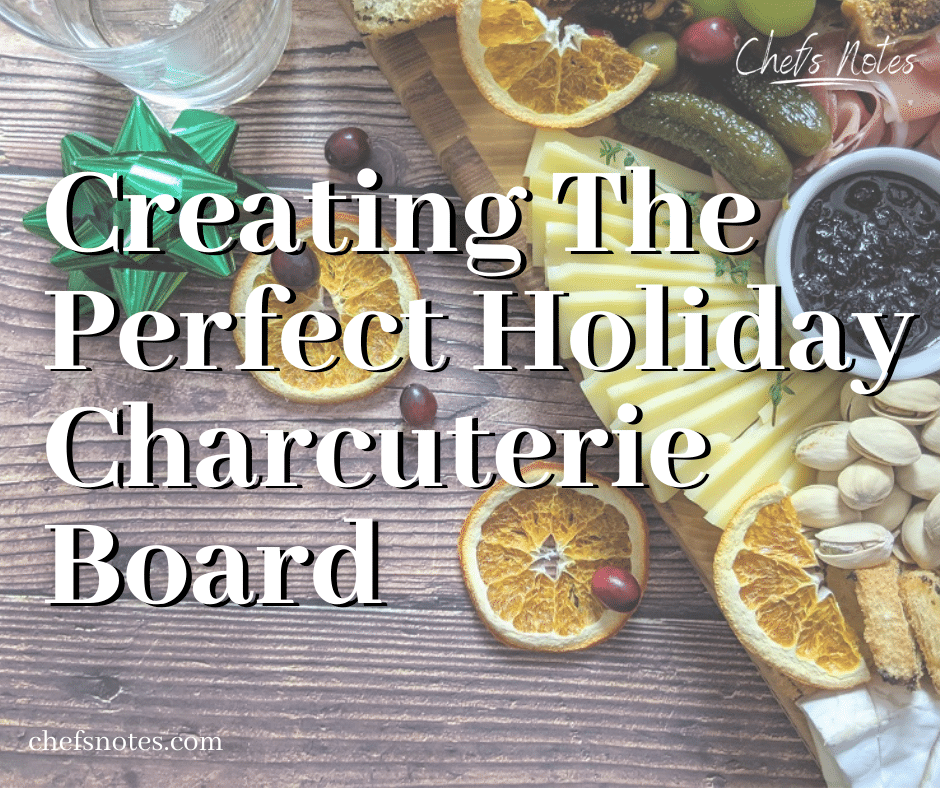
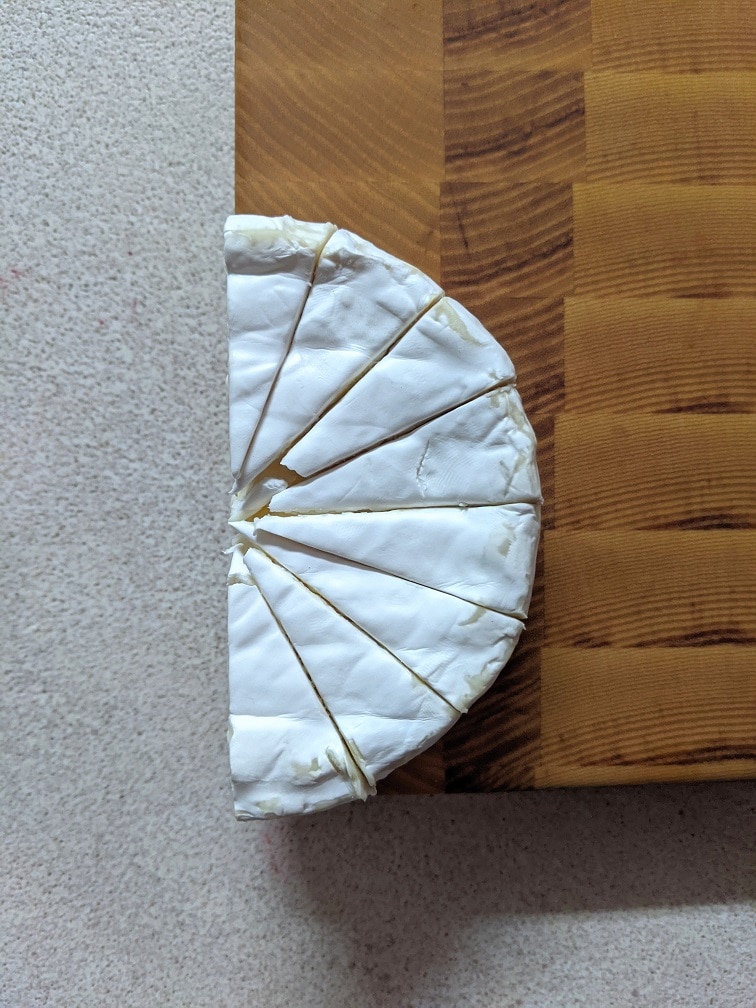
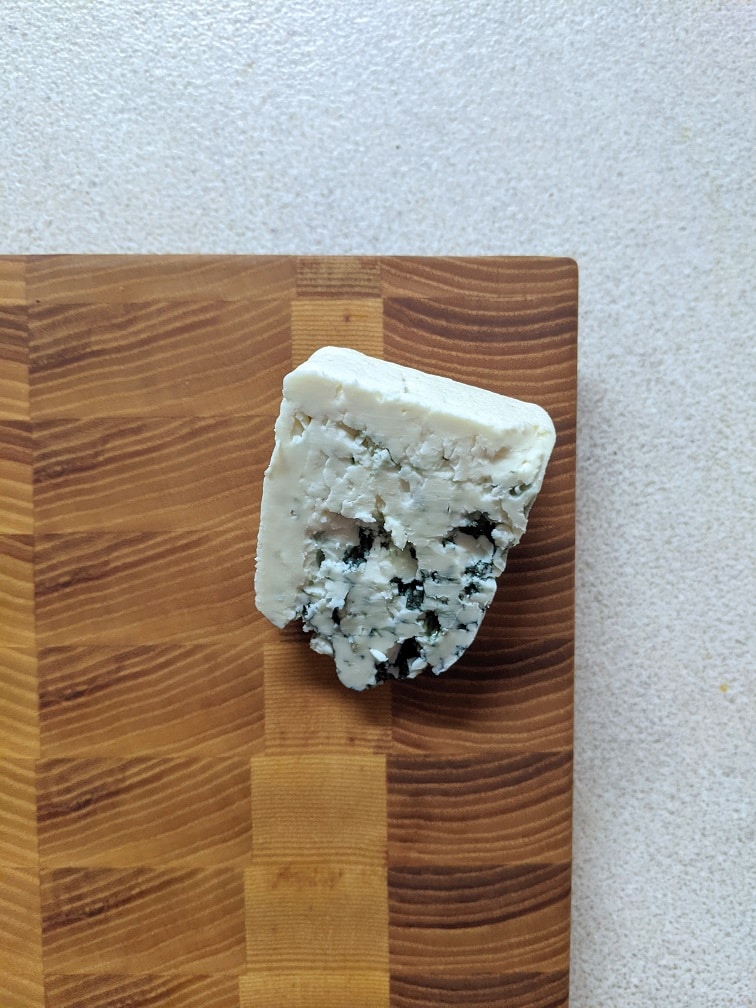
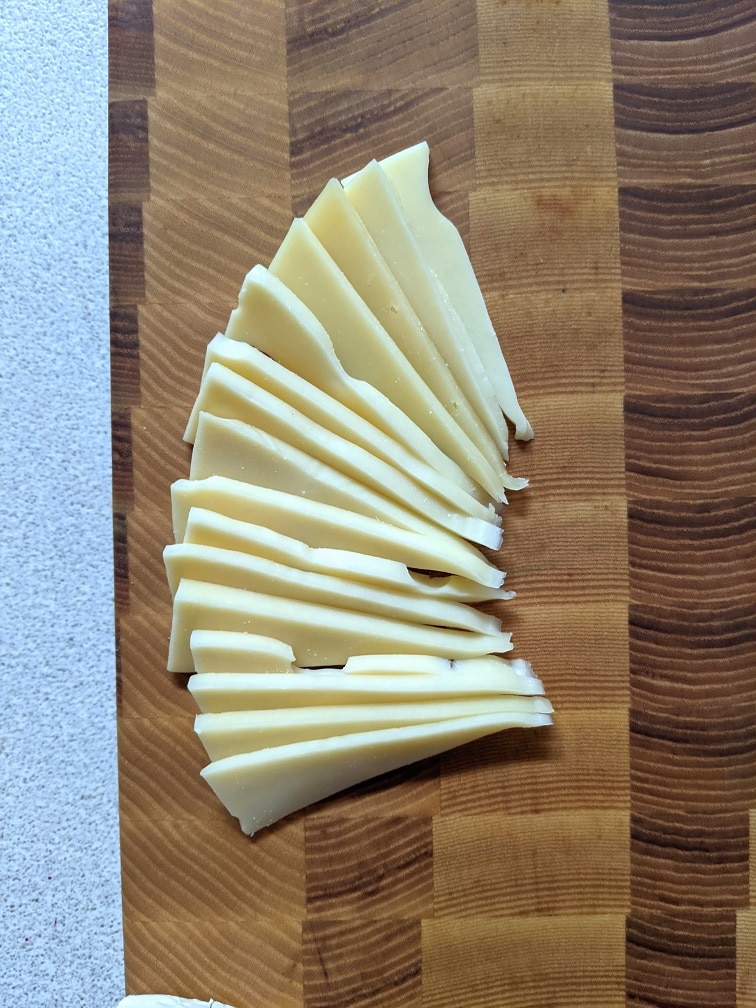
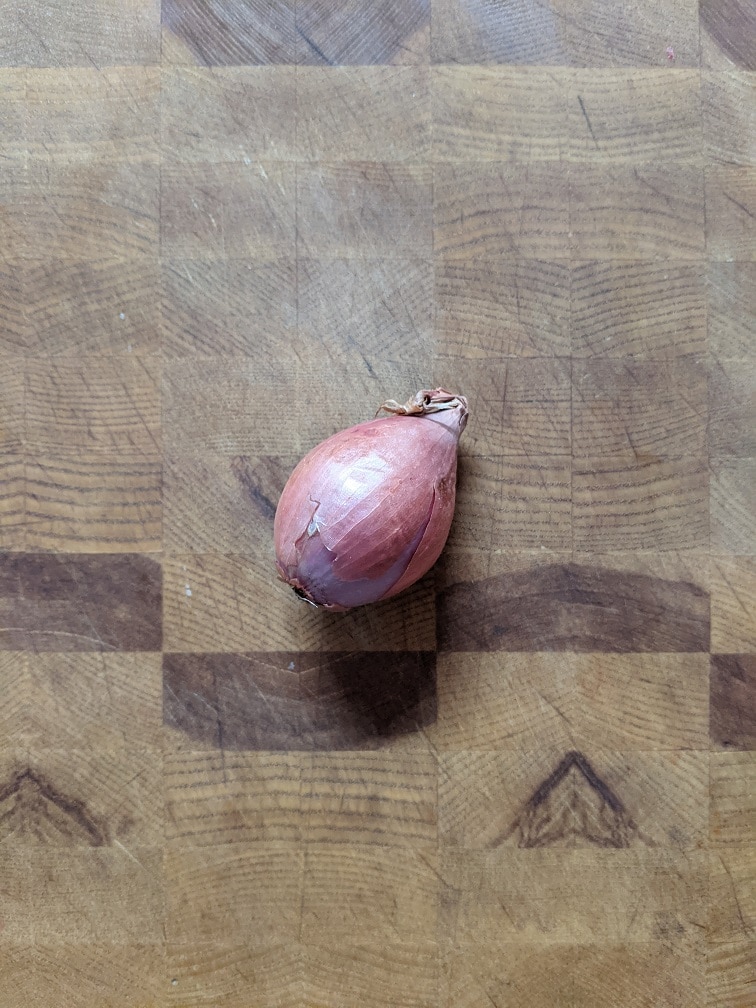
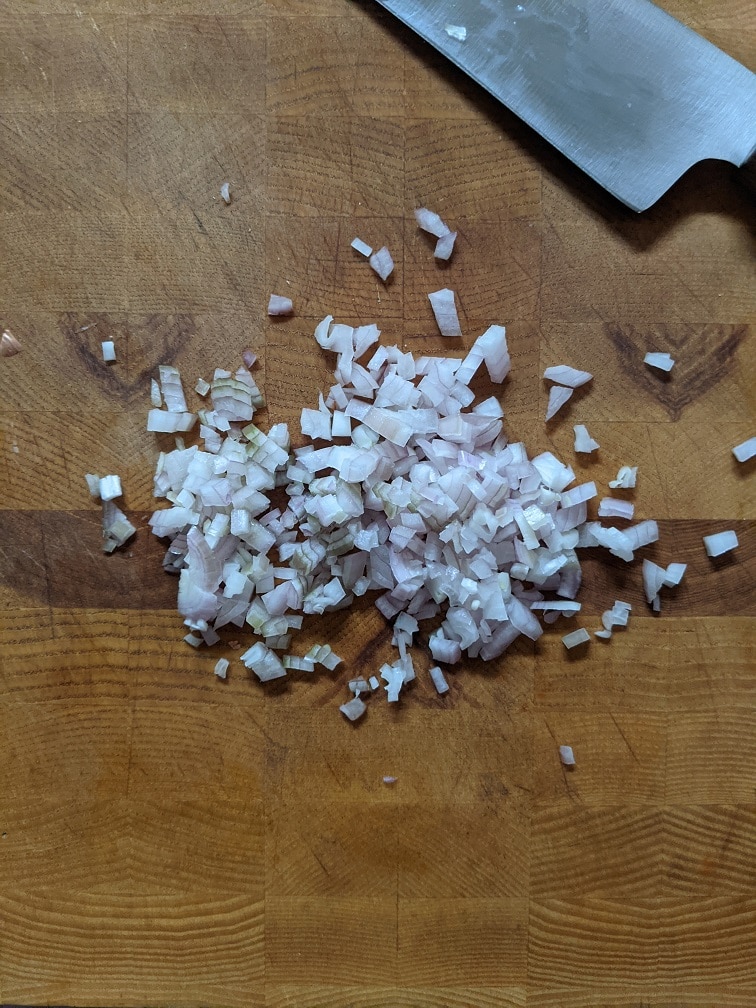
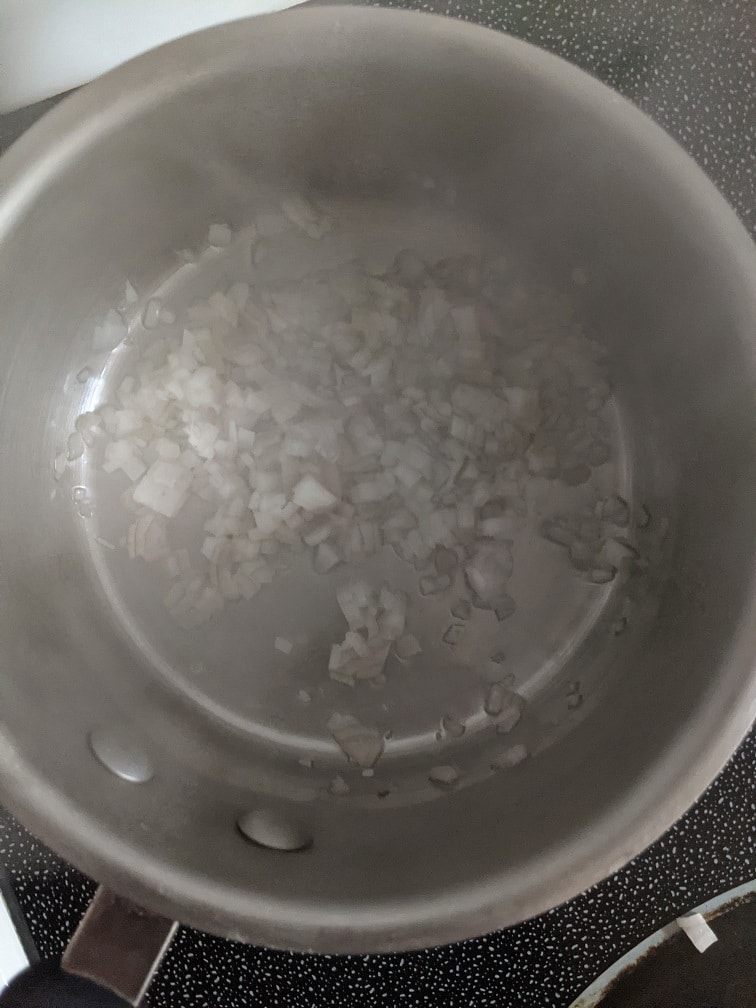
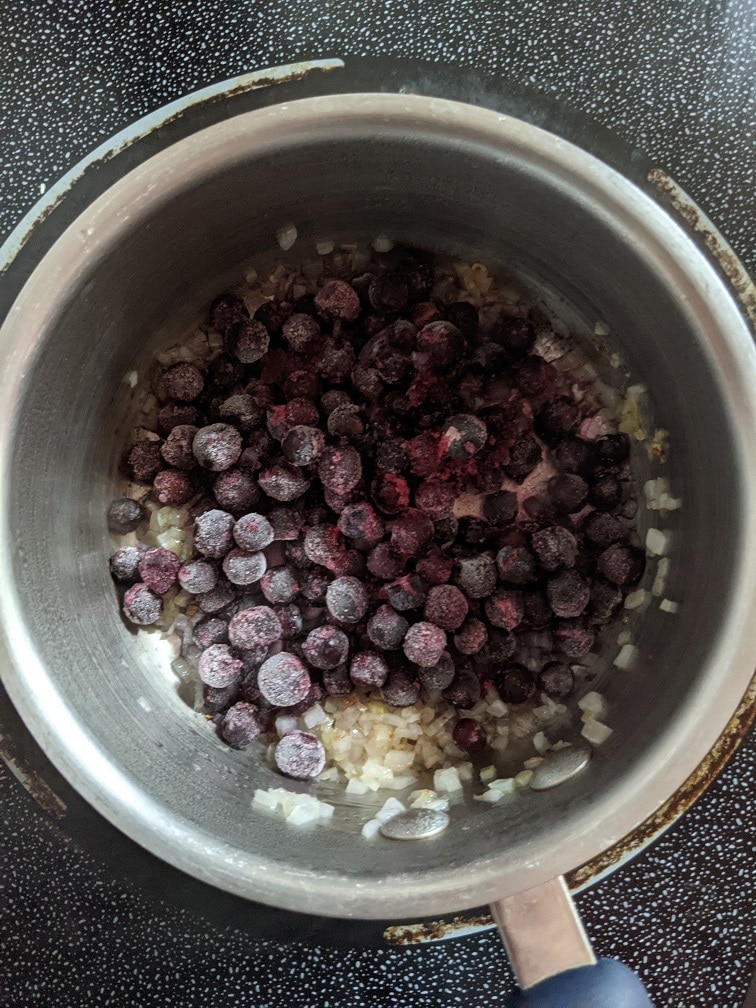
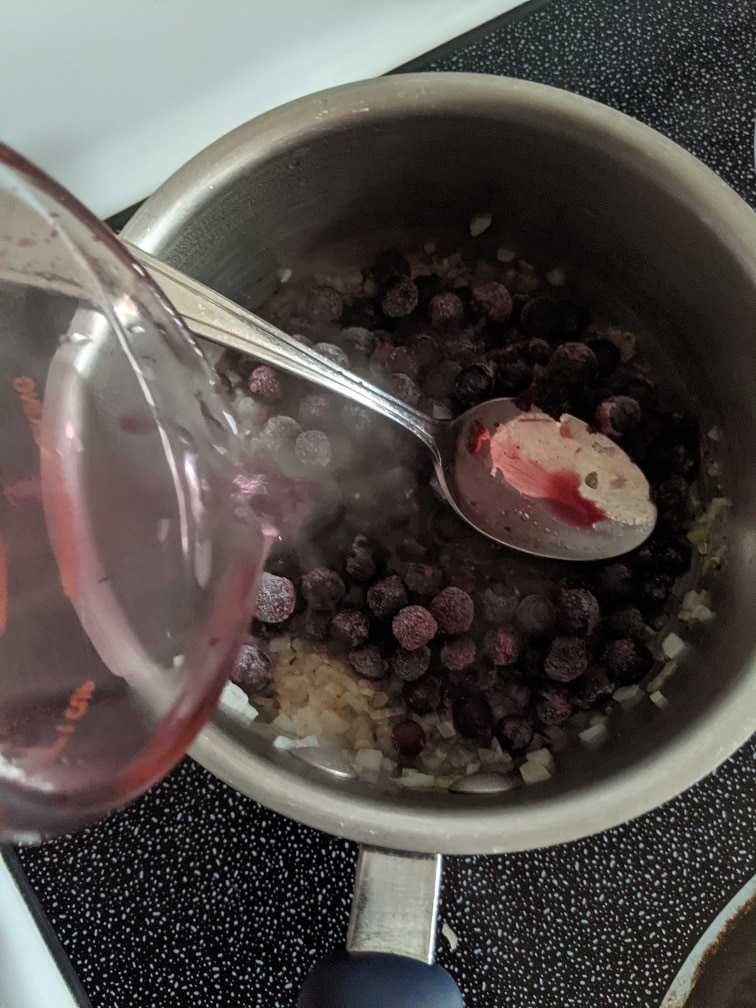
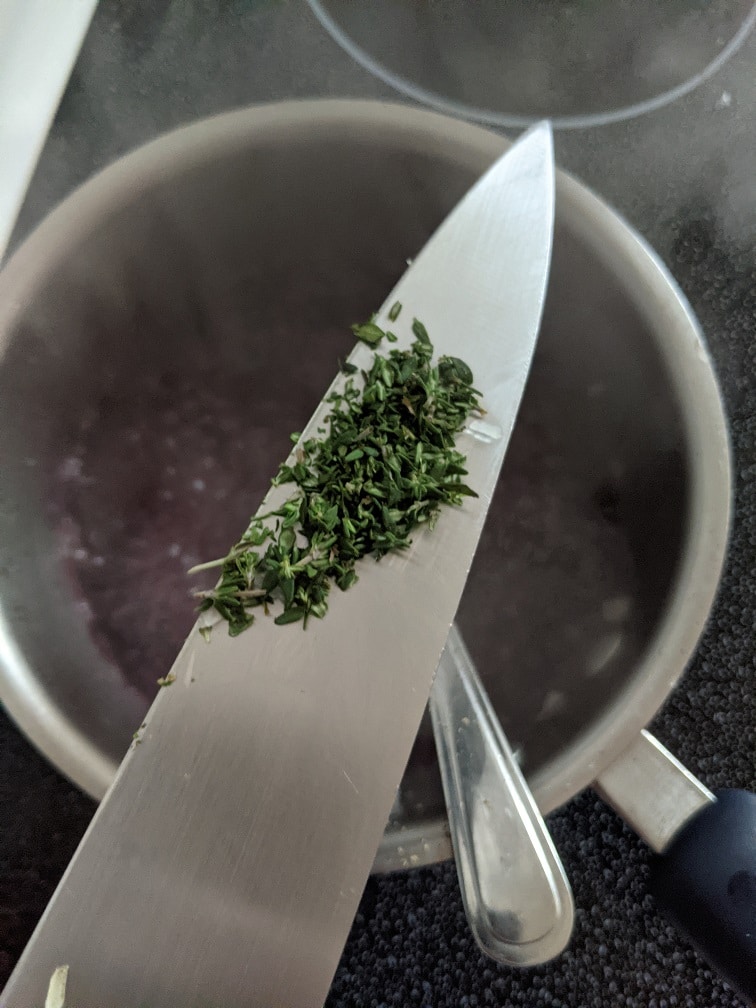
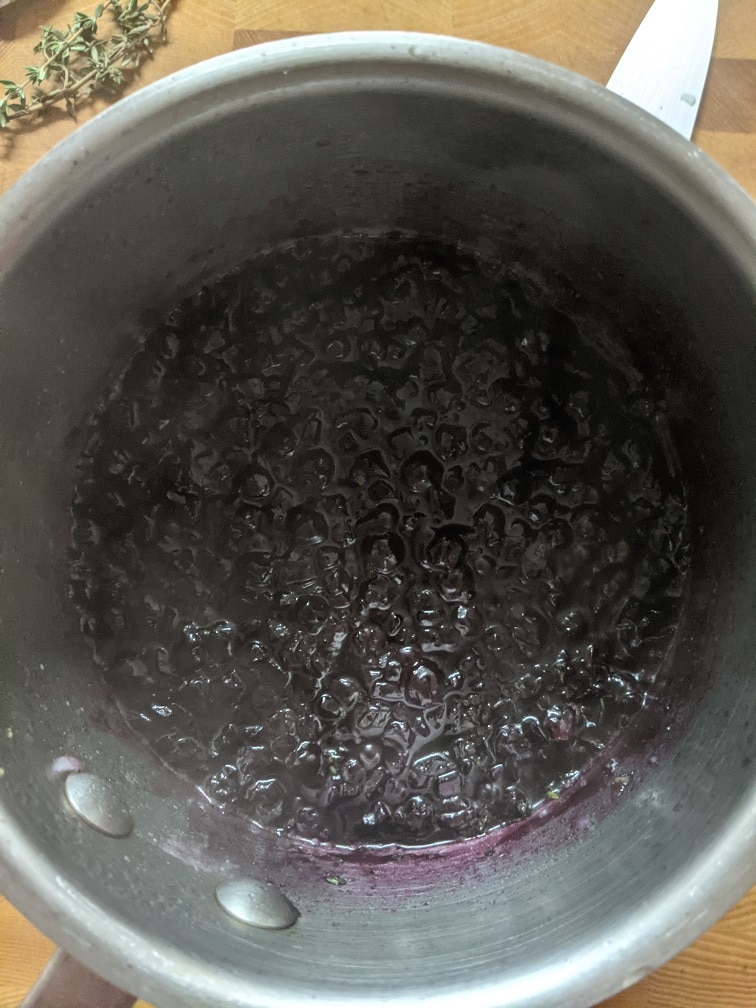
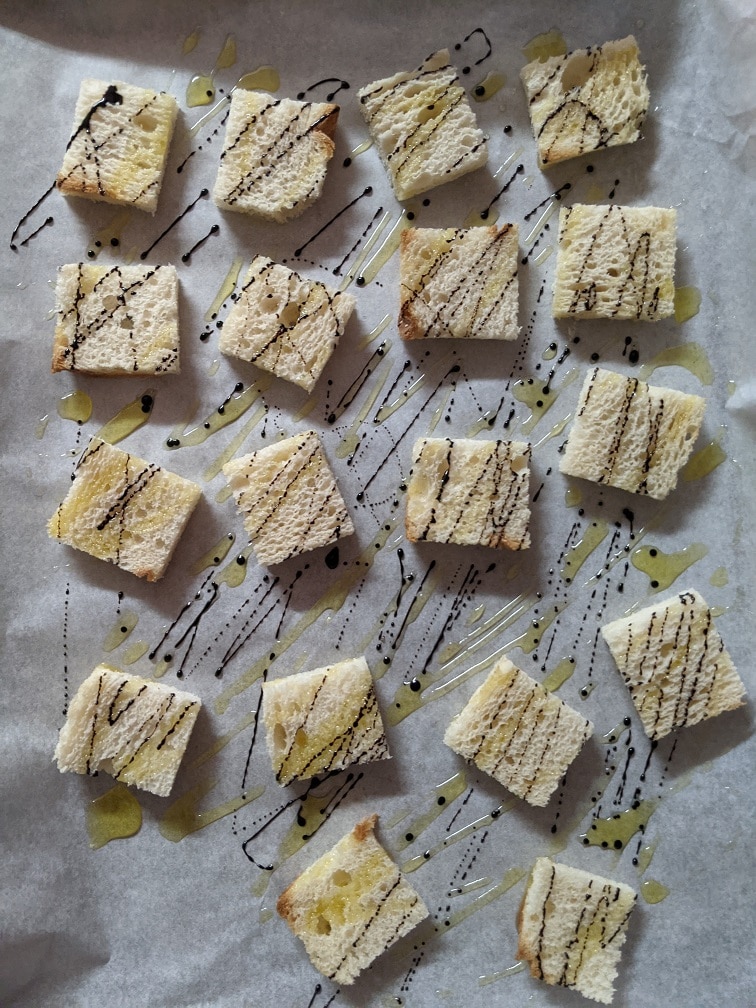
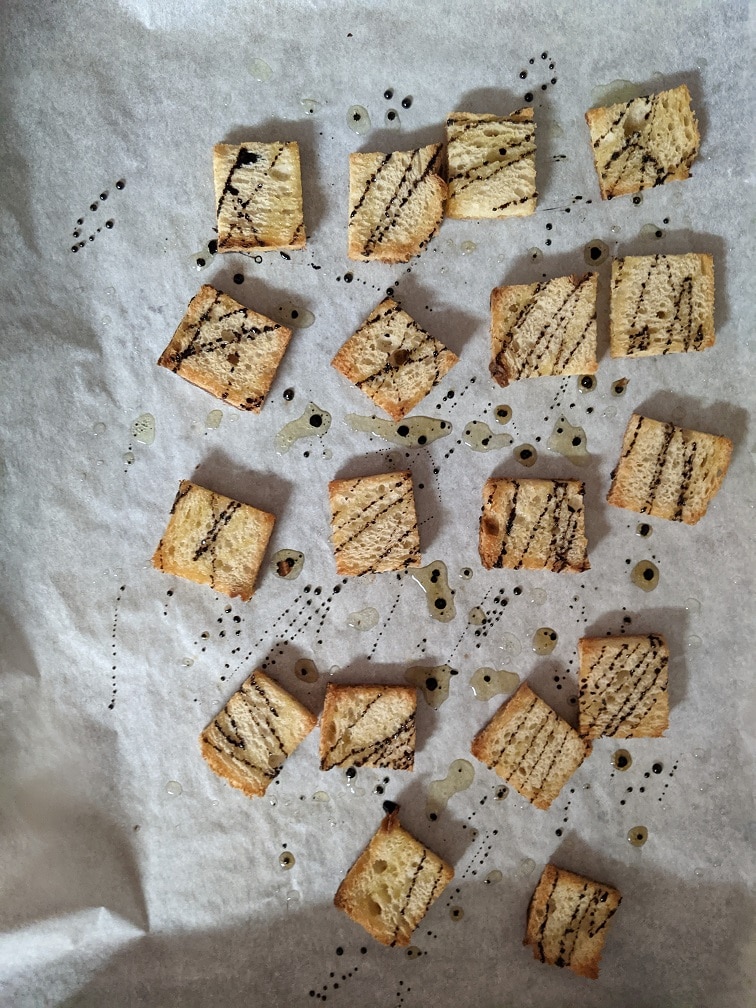
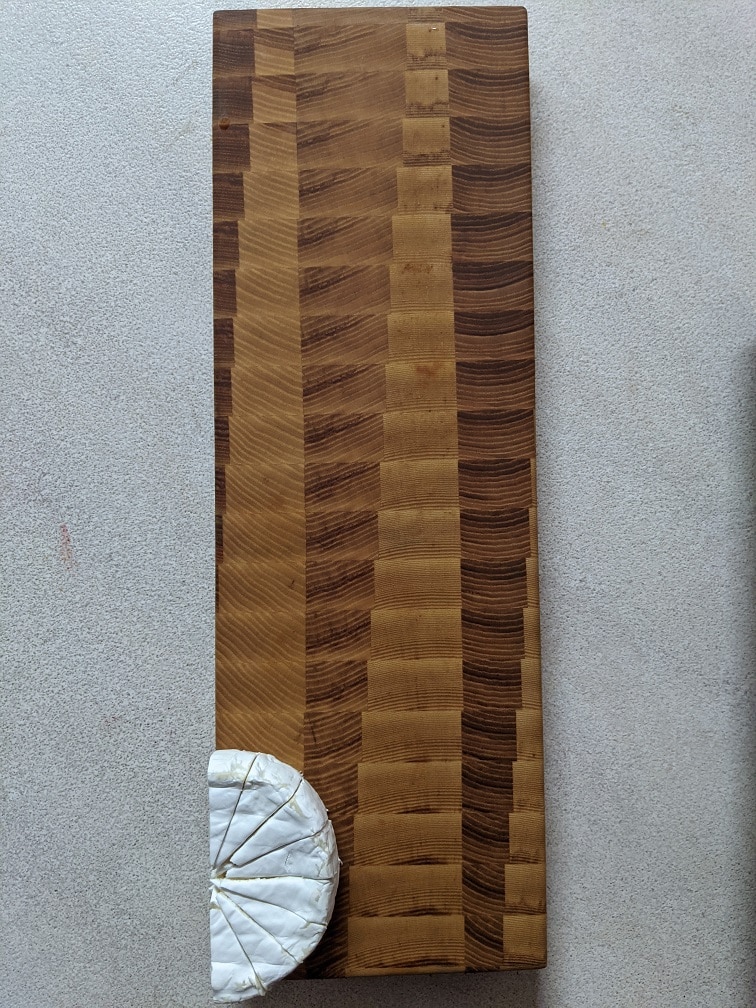
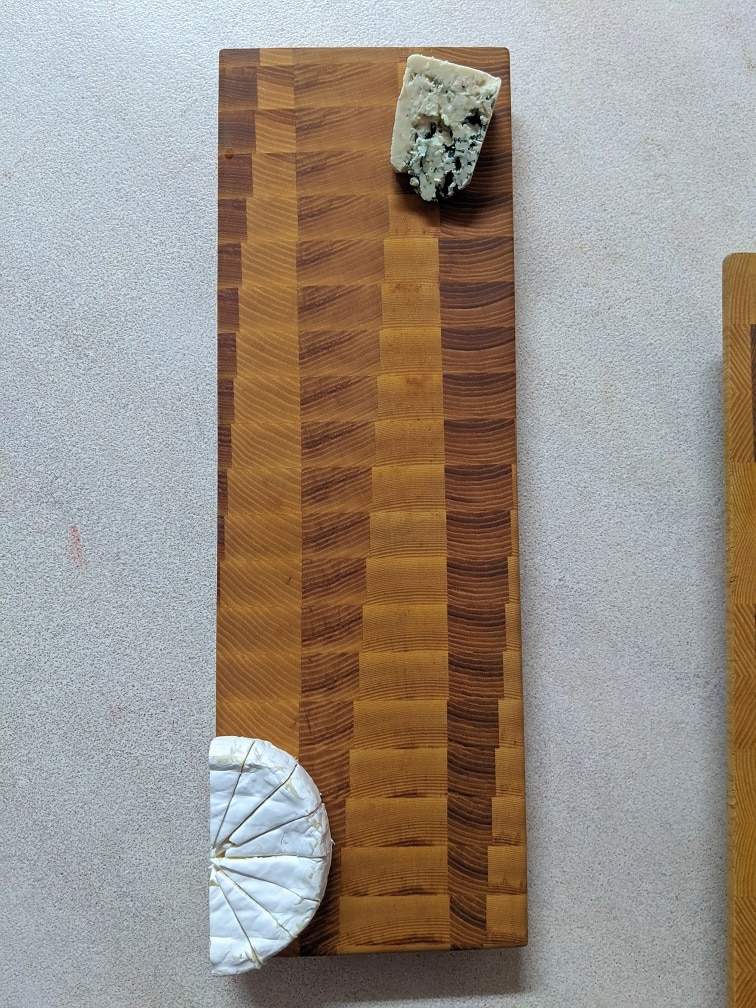
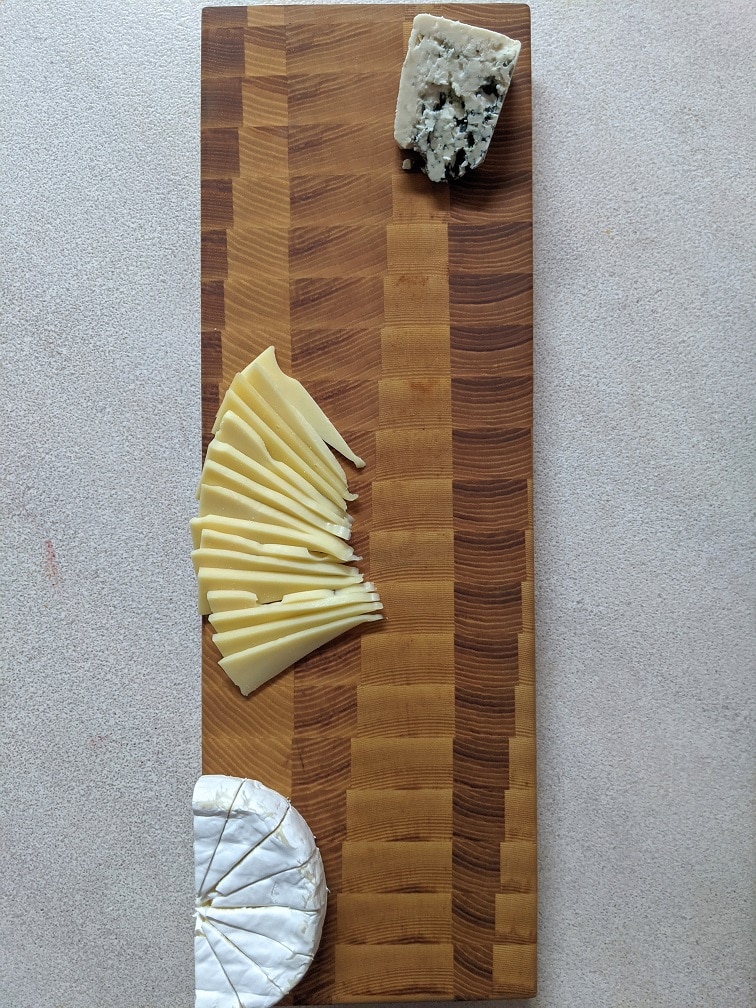
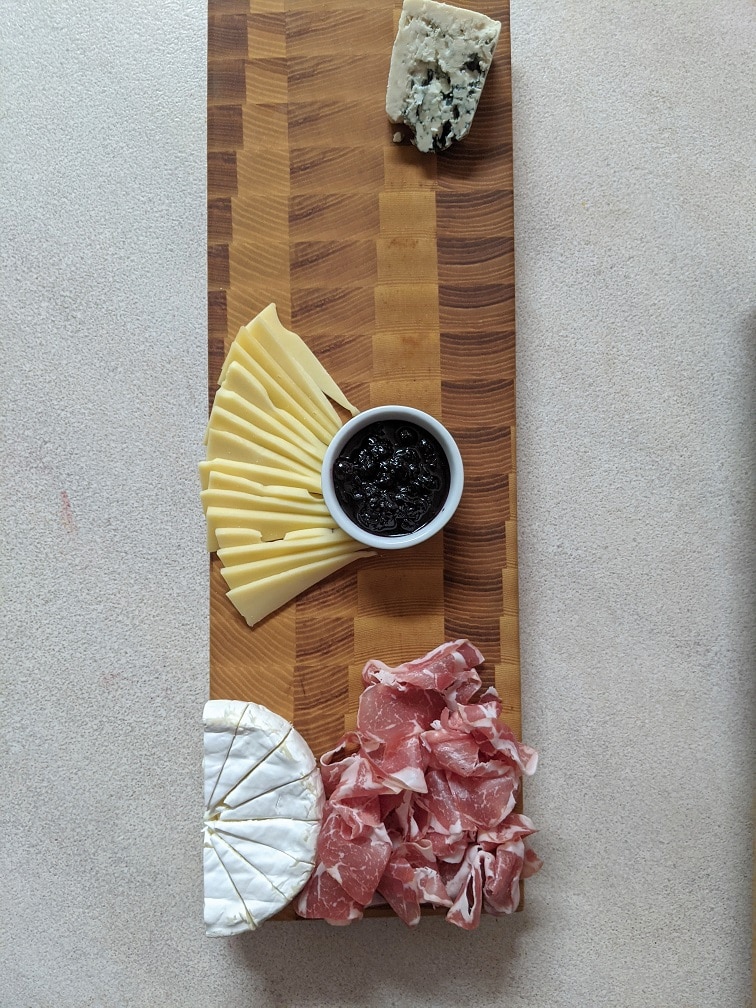
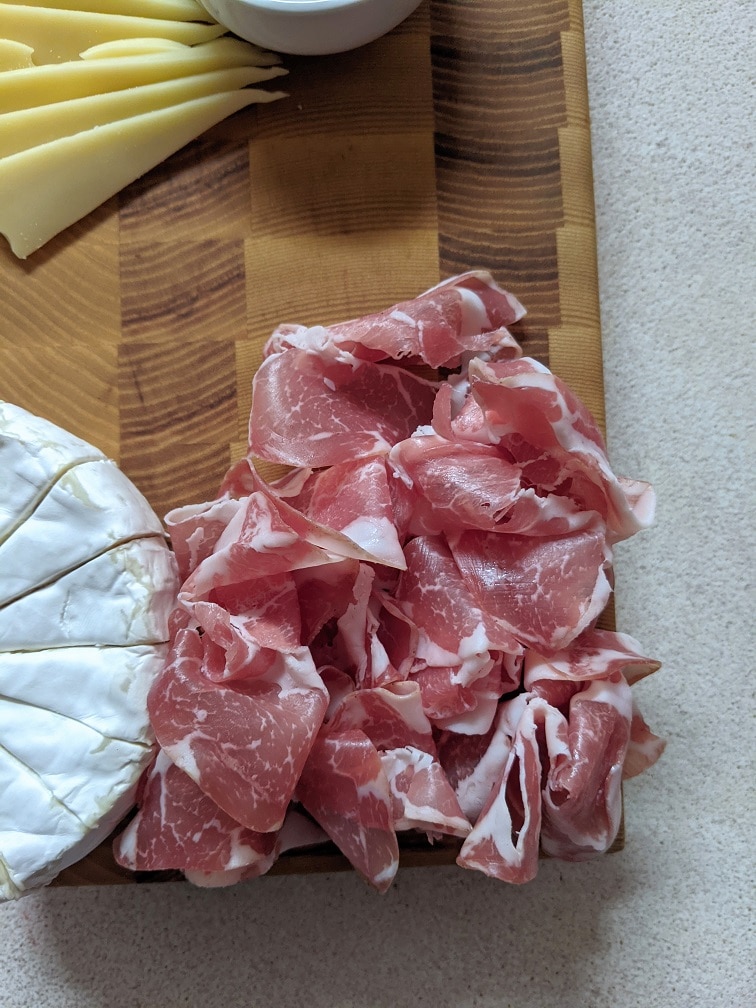
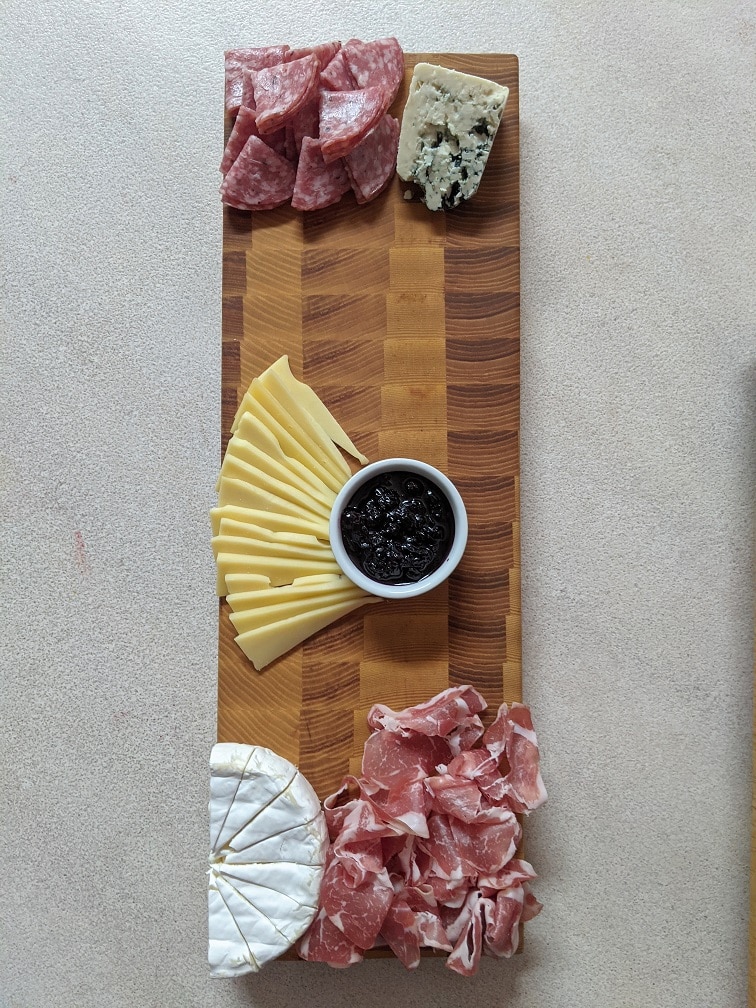
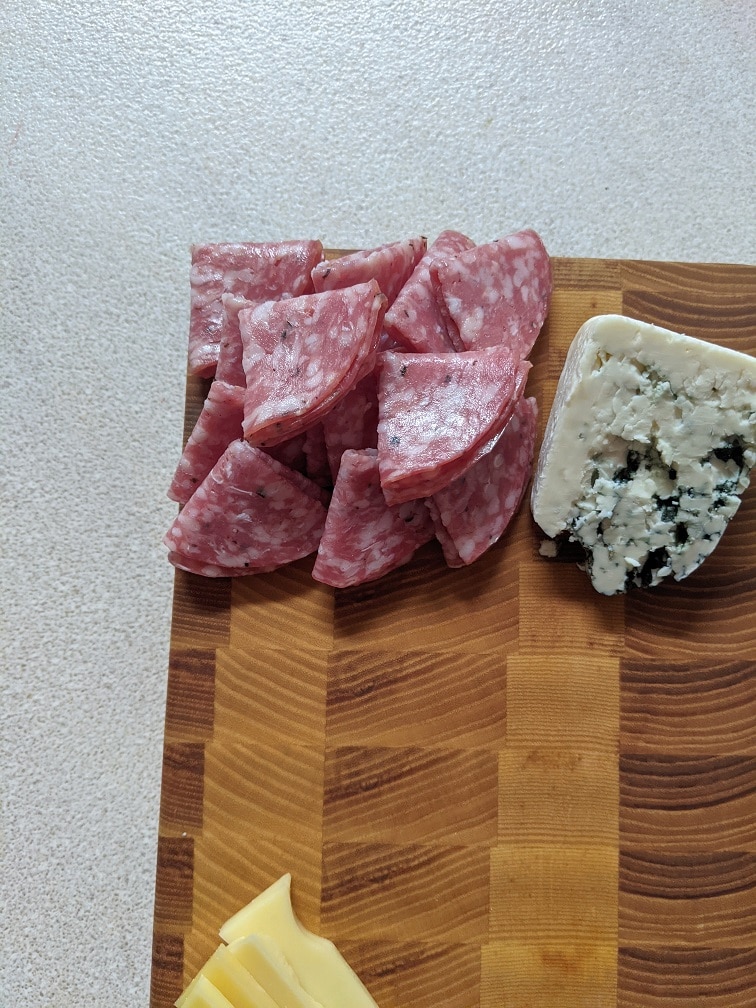
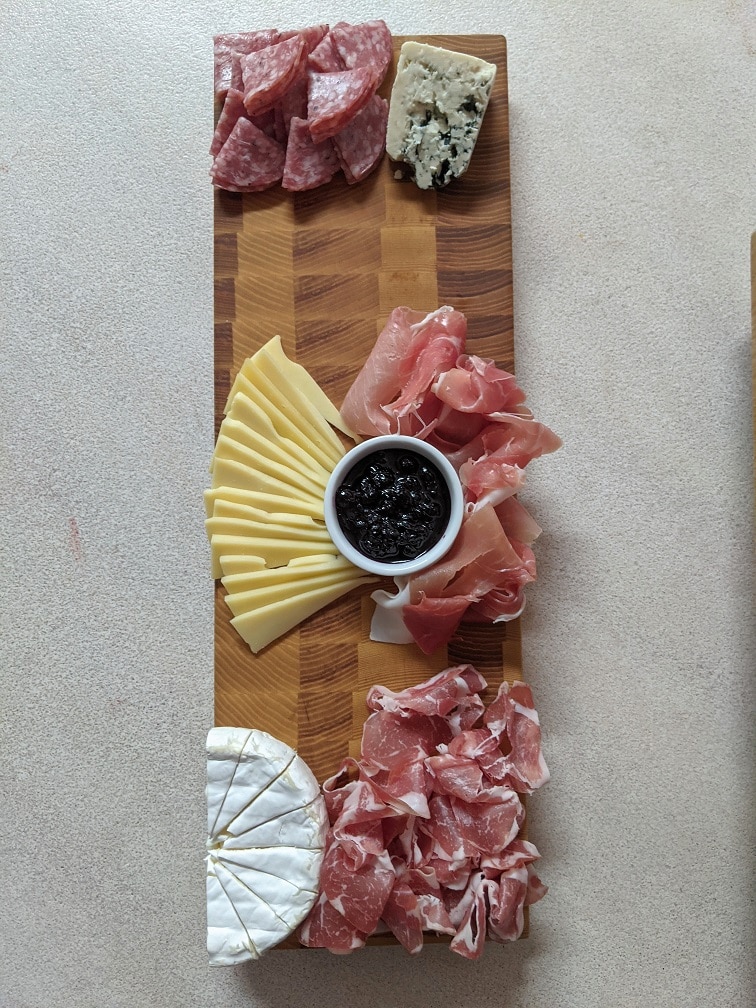
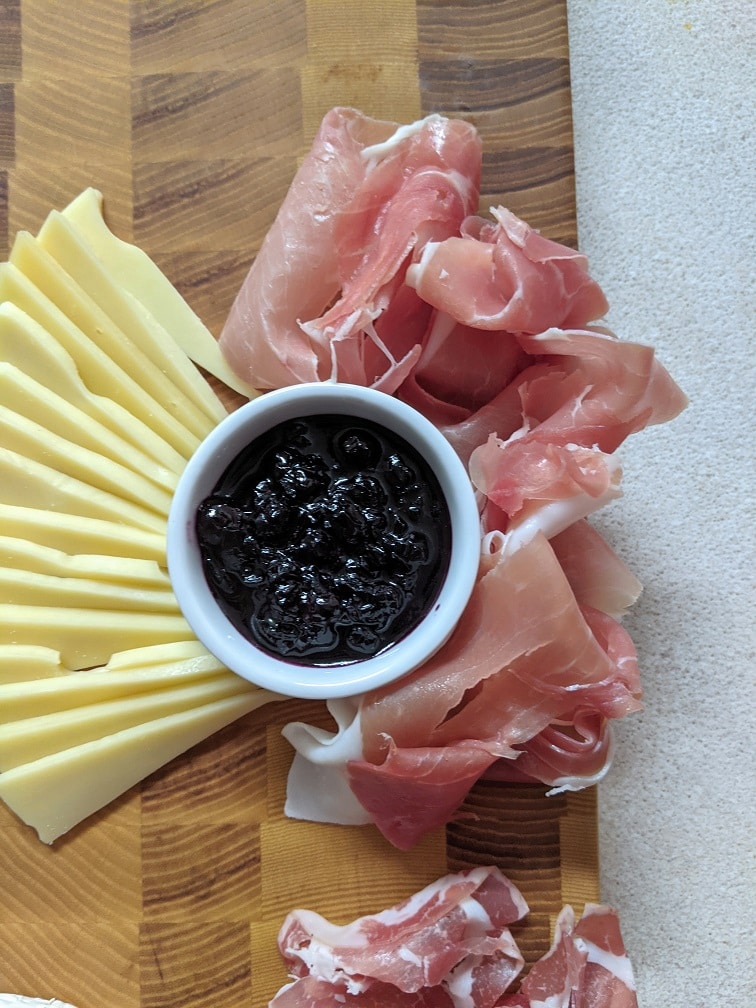
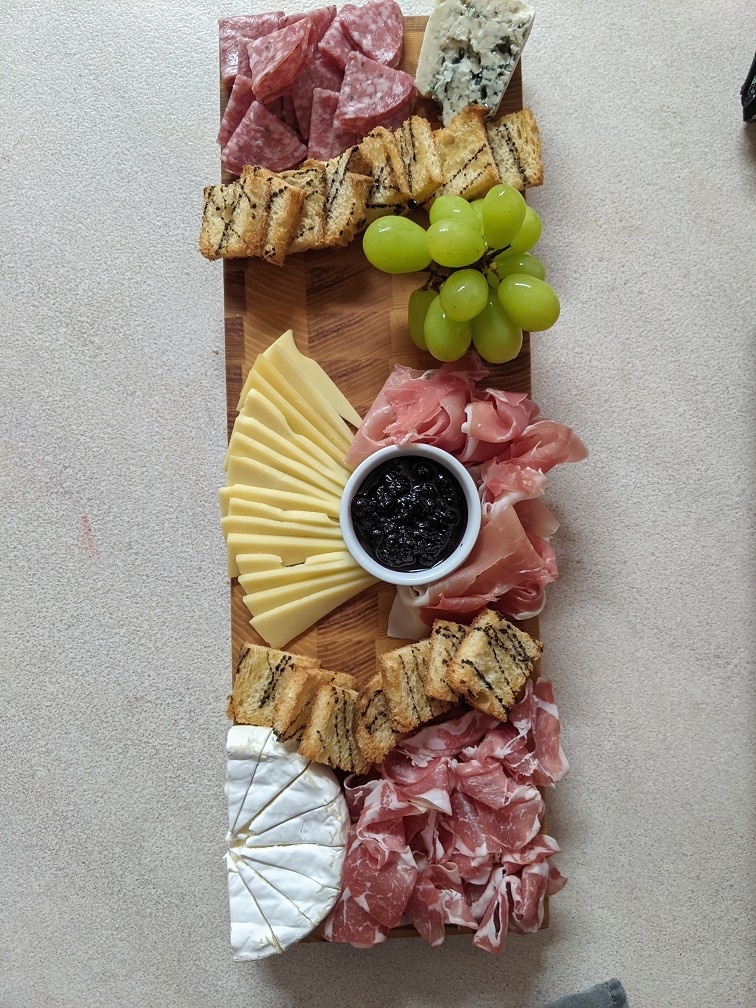
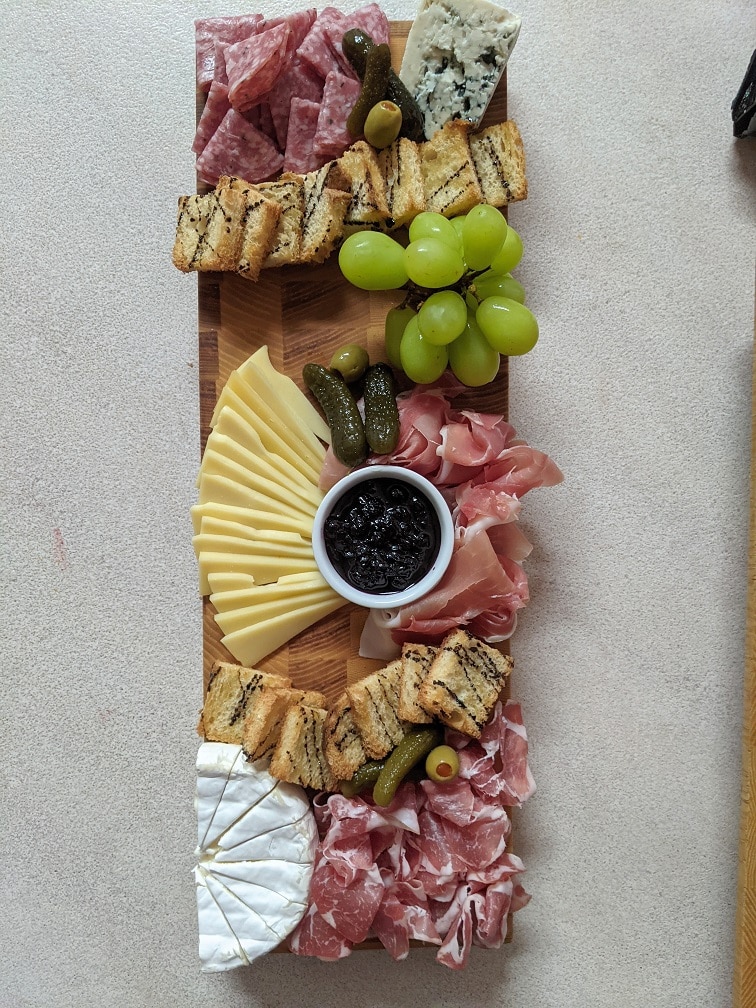
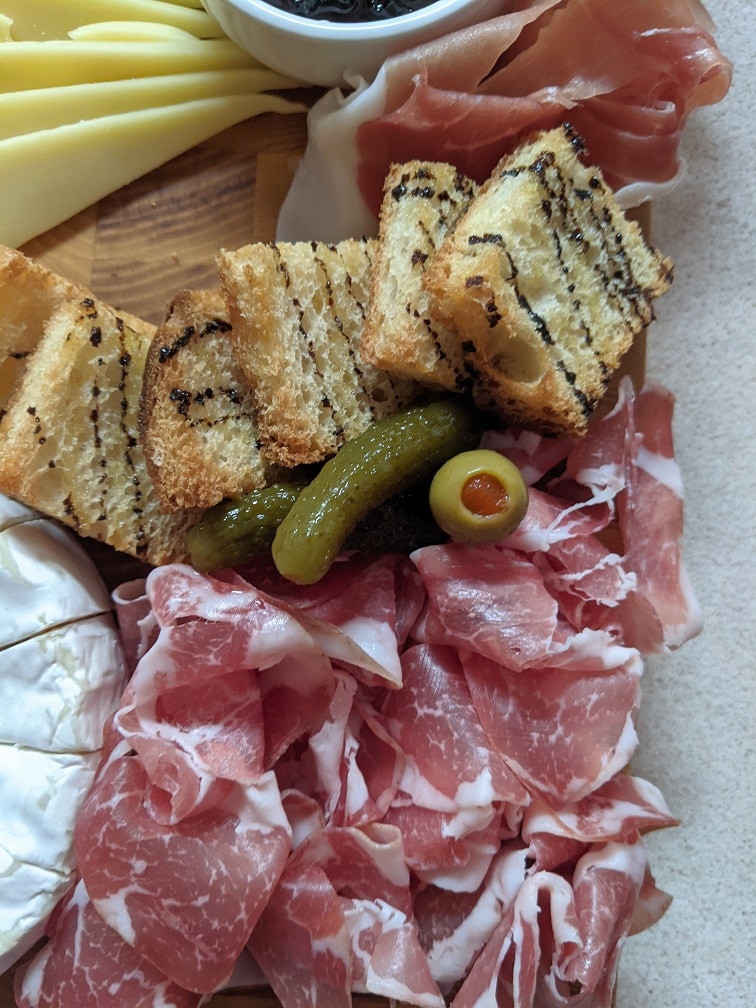
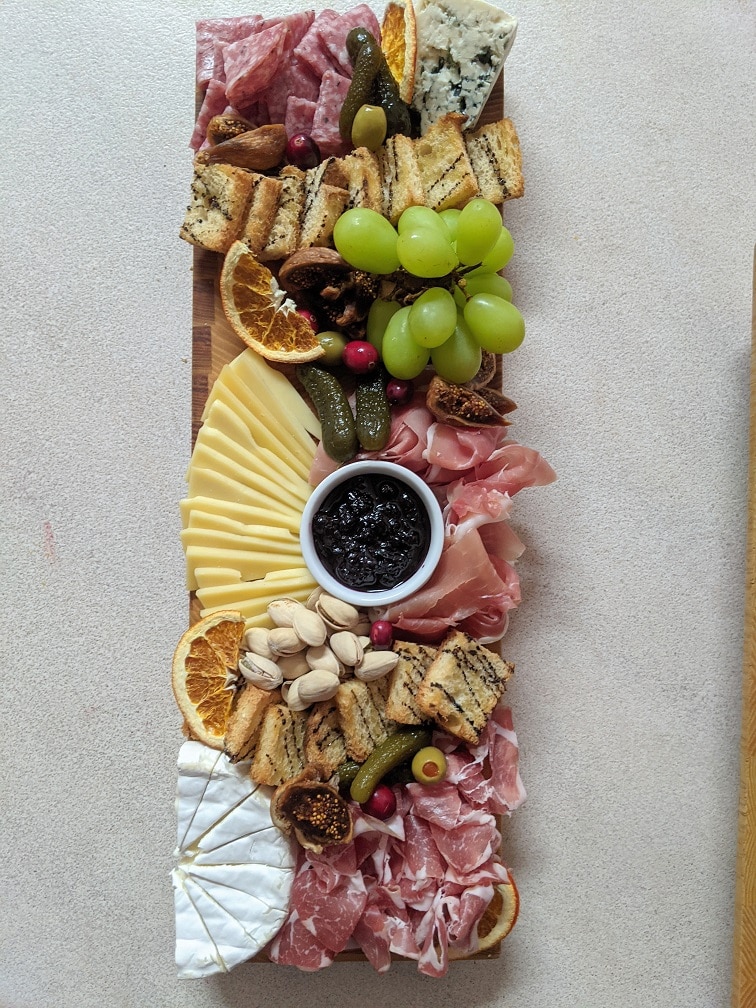
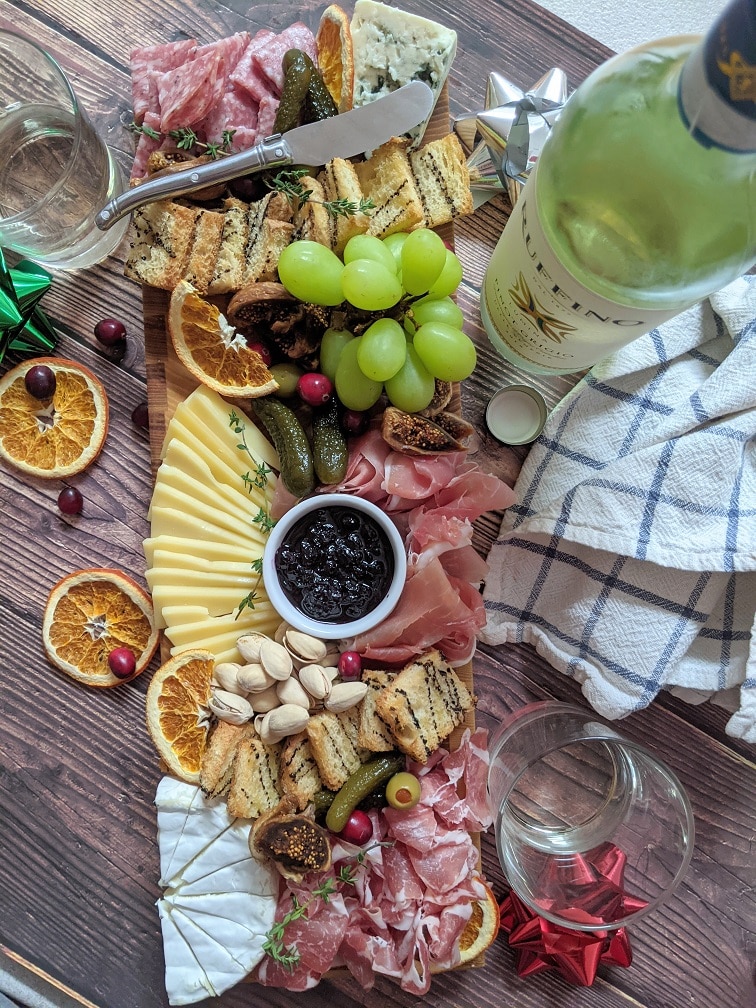
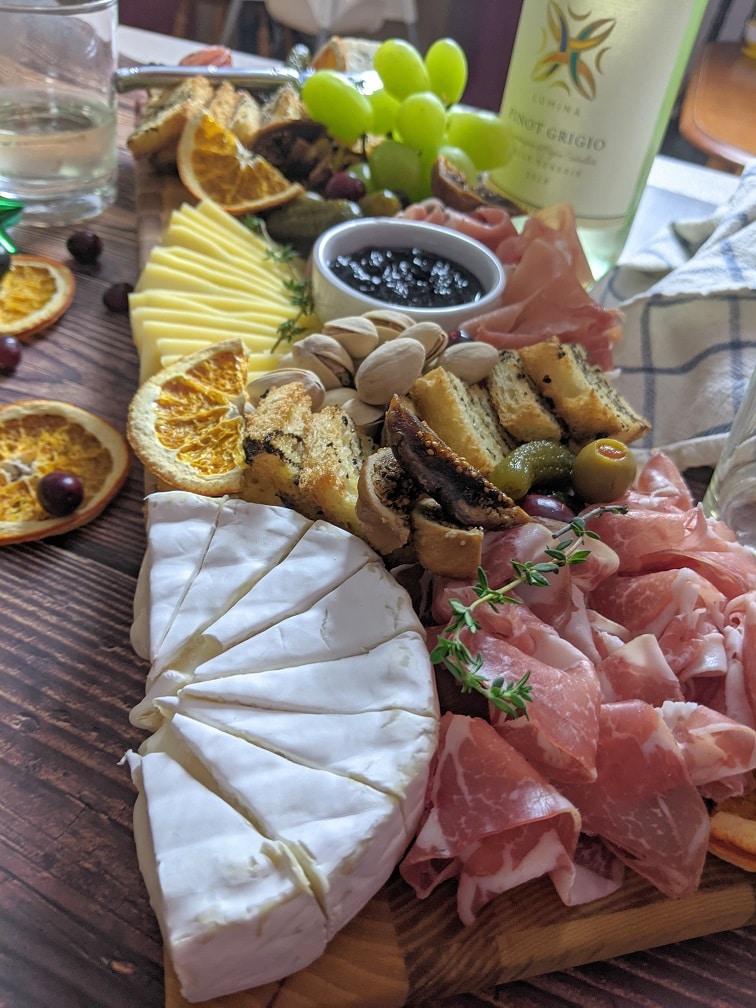
Charcuterie boards are one of our new favorites!! There’s something there for everyone! Thank you for the post…I’ve learned from it. I am definitely going to make your blueberry compote over the Holidays. Merry Christmas to you & your family & looking forward to your new posts as always! 🙂
I’m glad to hear that Cathy! Merry Christmas to your family as well!
Thank you for this post! Inspiring me to create Blueberry Compote and put my new artisan match boards to good use for Yule on Monday! Happy Holidays!